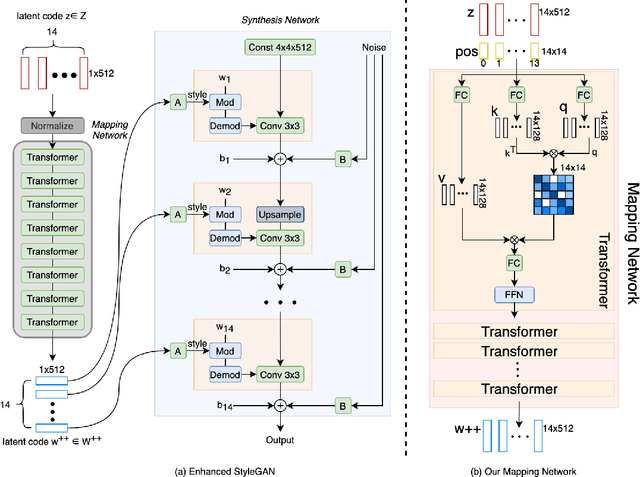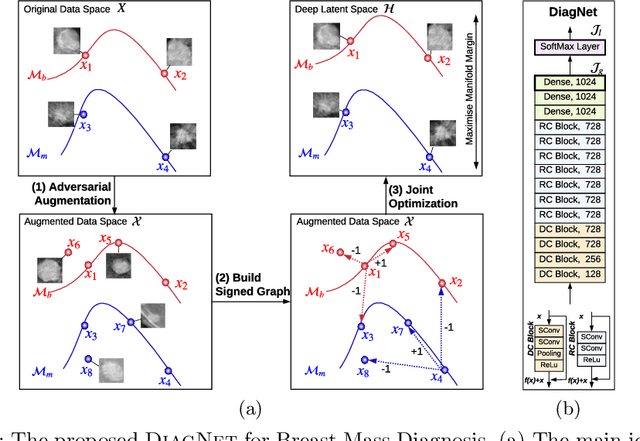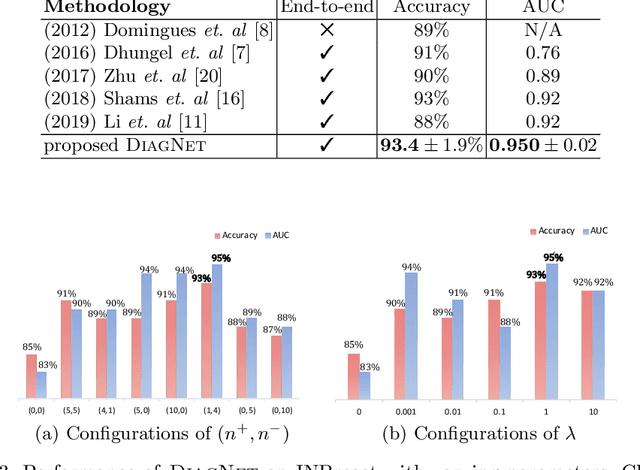Heyi Li
RF-Enhanced Road Infrastructure for Intelligent Transportation
Nov 01, 2023



Abstract:The EPC GEN 2 communication protocol for Ultra-high frequency Radio Frequency Identification (RFID) has offered a promising avenue for advancing the intelligence of transportation infrastructure. With the capability of linking vehicles to RFID readers to crowdsource information from RFID tags on road infrastructures, the RF-enhanced road infrastructure (REI) can potentially transform data acquisition for urban transportation. Despite its potential, the broader adoption of RFID technologies in building intelligent roads has been limited by a deficiency in understanding how the GEN 2 protocol impacts system performance under different transportation settings. This paper fills this knowledge gap by presenting the system architecture and detailing the design challenges associated with REI. Comprehensive real-world experiments are conducted to assess REI's effectiveness across various urban contexts. The results yield crucial insights into the optimal design of on-vehicle RFID readers and on-road RFID tags, considering the constraints imposed by vehicle dynamics, road geometries, and tag placements. With the optimized designs of encoding schemes for reader-tag communication and on-vehicle antennas, REI is able to fulfill the requirements of traffic sign inventory management and environmental monitoring while falling short of catering to the demand for high-speed navigation. In particular, the Miller 2 encoding scheme strikes the best balance between reading performance (e.g., throughput) and noise tolerance for the multipath effect. Additionally, we show that the on-vehicle antenna should be oriented to maximize the available time for reading on-road tags, although it may reduce the received power by the tags in the forward link.
Transforming the Latent Space of StyleGAN for Real Face Editing
May 29, 2021



Abstract:Despite recent advances in semantic manipulation using StyleGAN, semantic editing of real faces remains challenging. The gap between the $W$ space and the $W$+ space demands an undesirable trade-off between reconstruction quality and editing quality. To solve this problem, we propose to expand the latent space by replacing fully-connected layers in the StyleGAN's mapping network with attention-based transformers. This simple and effective technique integrates the aforementioned two spaces and transforms them into one new latent space called $W$++. Our modified StyleGAN maintains the state-of-the-art generation quality of the original StyleGAN with moderately better diversity. But more importantly, the proposed $W$++ space achieves superior performance in both reconstruction quality and editing quality. Despite these significant advantages, our $W$++ space supports existing inversion algorithms and editing methods with only negligible modifications thanks to its structural similarity with the $W/W$+ space. Extensive experiments on the FFHQ dataset prove that our proposed $W$++ space is evidently more preferable than the previous $W/W$+ space for real face editing. The code is publicly available for research purposes at https://github.com/AnonSubm2021/TransStyleGAN.
COIN: Contrastive Identifier Network for Breast Mass Diagnosis in Mammography
Dec 29, 2020



Abstract:Computer-aided breast cancer diagnosis in mammography is a challenging problem, stemming from mammographical data scarcity and data entanglement. In particular, data scarcity is attributed to the privacy and expensive annotation. And data entanglement is due to the high similarity between benign and malignant masses, of which manifolds reside in lower dimensional space with very small margin. To address these two challenges, we propose a deep learning framework, named Contrastive Identifier Network (\textsc{COIN}), which integrates adversarial augmentation and manifold-based contrastive learning. Firstly, we employ adversarial learning to create both on- and off-distribution mass contained ROIs. After that, we propose a novel contrastive loss with a built Signed graph. Finally, the neural network is optimized in a contrastive learning manner, with the purpose of improving the deep model's discriminativity on the extended dataset. In particular, by employing COIN, data samples from the same category are pulled close whereas those with different labels are pushed further in the deep latent space. Moreover, COIN outperforms the state-of-the-art related algorithms for solving breast cancer diagnosis problem by a considerable margin, achieving 93.4\% accuracy and 95.0\% AUC score. The code will release on ***.
Dual Convolutional Neural Networks for Breast Mass Segmentation and Diagnosis in Mammography
Aug 11, 2020



Abstract:Deep convolutional neural networks (CNNs) have emerged as a new paradigm for Mammogram diagnosis. Contemporary CNN-based computer-aided-diagnosis (CAD) for breast cancer directly extract latent features from input mammogram image and ignore the importance of morphological features. In this paper, we introduce a novel deep learning framework for mammogram image processing, which computes mass segmentation and simultaneously predict diagnosis results. Specifically, our method is constructed in a dual-path architecture that solves the mapping in a dual-problem manner, with an additional consideration of important shape and boundary knowledge. One path called the Locality Preserving Learner (LPL), is devoted to hierarchically extracting and exploiting intrinsic features of the input. Whereas the other path, called the Conditional Graph Learner (CGL) focuses on generating geometrical features via modeling pixel-wise image to mask correlations. By integrating the two learners, both the semantics and structure are well preserved and the component learning paths in return complement each other, contributing an improvement to the mass segmentation and cancer classification problem at the same time. We evaluated our method on two most used public mammography datasets, DDSM and INbreast. Experimental results show that DualCoreNet achieves the best mammography segmentation and classification simultaneously, outperforming recent state-of-the-art models.
Interpreting Galaxy Deblender GAN from the Discriminator's Perspective
Jan 17, 2020



Abstract:Generative adversarial networks (GANs) are well known for their unsupervised learning capabilities. A recent success in the field of astronomy is deblending two overlapping galaxy images via a branched GAN model. However, it remains a significant challenge to comprehend how the network works, which is particularly difficult for non-expert users. This research focuses on behaviors of one of the network's major components, the Discriminator, which plays a vital role but is often overlooked, Specifically, we enhance the Layer-wise Relevance Propagation (LRP) scheme to generate a heatmap-based visualization. We call this technique Polarized-LRP and it consists of two parts i.e. positive contribution heatmaps for ground truth images and negative contribution heatmaps for generated images. Using the Galaxy Zoo dataset we demonstrate that our method clearly reveals attention areas of the Discriminator when differentiating generated galaxy images from ground truth images. To connect the Discriminator's impact on the Generator, we visualize the gradual changes of the Generator across the training process. An interesting result we have achieved there is the detection of a problematic data augmentation procedure that would else have remained hidden. We find that our proposed method serves as a useful visual analytical tool for a deeper understanding of GAN models.
Signed Laplacian Deep Learning with Adversarial Augmentation for Improved Mammography Diagnosis
Jun 30, 2019


Abstract:Computer-aided breast cancer diagnosis in mammography is limited by inadequate data and the similarity between benign and cancerous masses. To address this, we propose a signed graph regularized deep neural network with adversarial augmentation, named \textsc{DiagNet}. Firstly, we use adversarial learning to generate positive and negative mass-contained mammograms for each mass class. After that, a signed similarity graph is built upon the expanded data to further highlight the discrimination. Finally, a deep convolutional neural network is trained by jointly optimizing the signed graph regularization and classification loss. Experiments show that the \textsc{DiagNet} framework outperforms the state-of-the-art in breast mass diagnosis in mammography.
A Deep DUAL-PATH Network for Improved Mammogram Image Processing
Mar 01, 2019



Abstract:We present, for the first time, a novel deep neural network architecture called \dcn with a dual-path connection between the input image and output class label for mammogram image processing. This architecture is built upon U-Net, which non-linearly maps the input data into a deep latent space. One path of the \dcnn, the locality preserving learner, is devoted to hierarchically extracting and exploiting intrinsic features of the input, while the other path, called the conditional graph learner, focuses on modeling the input-mask correlations. The learned mask is further used to improve classification results, and the two learning paths complement each other. By integrating the two learners our new architecture provides a simple but effective way to jointly learn the segmentation and predict the class label. Benefiting from the powerful expressive capacity of deep neural networks a more discriminative representation can be learned, in which both the semantics and structure are well preserved. Experimental results show that \dcn achieves the best mammography segmentation and classification simultaneously, outperforming recent state-of-the-art models.
Beyond saliency: understanding convolutional neural networks from saliency prediction on layer-wise relevance propagation
Sep 15, 2018



Abstract:Despite the tremendous achievements of deep convolutional neural networks (CNNs) in many computer vision tasks, understanding how they actually work remains a significant challenge. In this paper, we propose a novel two-step understanding method, namely Salient Relevance (SR) map, which aims to shed light on how deep CNNs recognize images and learn features from areas, referred to as attention areas, therein. Our proposed method starts out with a layer-wise relevance propagation (LRP) step which estimates a pixel-wise relevance map over the input image. Following, we construct a context-aware saliency map, SR map, from the LRP-generated map which predicts areas close to the foci of attention instead of isolated pixels that LRP reveals. In human visual system, information of regions is more important than of pixels in recognition. Consequently, our proposed approach closely simulates human recognition. Experimental results using the ILSVRC2012 validation dataset in conjunction with two well-established deep CNN models, AlexNet and VGG-16, clearly demonstrate that our proposed approach concisely identifies not only key pixels but also attention areas that contribute to the underlying neural network's comprehension of the given images. As such, our proposed SR map constitutes a convenient visual interface which unveils the visual attention of the network and reveals which type of objects the model has learned to recognize after training. The source code is available at https://github.com/Hey1Li/Salient-Relevance-Propagation.
Improved Breast Mass Segmentation in Mammograms with Conditional Residual U-net
Aug 27, 2018



Abstract:We explore the use of deep learning for breast mass segmentation in mammograms. By integrating the merits of residual learning and probabilistic graphical modelling with standard U-Net, we propose a new deep network, Conditional Residual U-Net (CRU-Net), to improve the U-Net segmentation performance. Benefiting from the advantage of probabilistic graphical modelling in the pixel-level labelling, and the structure insights of a deep residual network in the feature extraction, the CRU-Net provides excellent mass segmentation performance. Evaluations based on INbreast and DDSM-BCRP datasets demonstrate that the CRU-Net achieves the best mass segmentation performance compared to the state-of-art methodologies. Moreover, neither tedious pre-processing nor post-processing techniques are not required in our algorithm.
 Add to Chrome
Add to Chrome Add to Firefox
Add to Firefox Add to Edge
Add to Edge